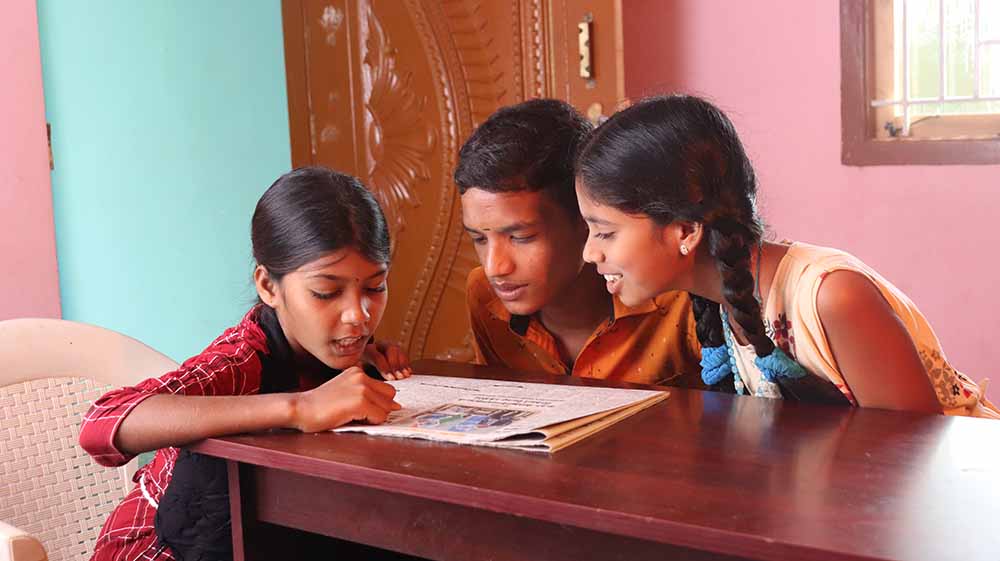When Parvathy Narayanan founded her NGO Aspire Foundation in 2006, it was with the aim to bridge the gap between urban and rural students. She did this by equipping the latter with the soft skills and activities needed to motivate them to stay in school. These children hail from backward villages in and around Nilakkotai, Tamil Nadu. ‘When I started off, funding was through a close circle of friends,' she says. ‘I requested them to sponsor a child, and they did – that’s how I began initially. In fact, so many years down the line, a lot of my funding is still from individuals who buy into the programme, because it has to do with children and education. By word of mouth, these friends refer other friends and family, supporting the business every year.’
Along the way though, Parvathy has also found two other sources of funding. One is through companies that offer matching contributions to what an employee sponsors. When friends working in corporates would fund Aspire, they would also receive a matching grant from the company. She also receives one-off funding from organisations such as the Rotary Club or Lions Club. ‘In general, there are other different ways of fundraising that women can look at for their NGOs,’ says Parvathy, who has a Masters Degree from the Madras School of Social Work. ‘One is the CSR route, where they can approach a company for funding. Here, the challenge is that it also has to fit in with the CSR mandate of the company. Typically, a lot of CSR funding will also come attached to a location. They would want to work in and around their factory site, so that it gives employees an opportunity to volunteer. They also ensure some branding for the company this way.’
She adds that organisations that come under the FCRA (Foreign Contribution Regulation Act), can also look at foreign sources of funding. Foundations abroad who want to expand their purview to India, would find an NGO that is already aligned to what they’re doing. ‘It could be organic farming or women’s upliftment, but will find like-minded and tie up with them for several years at a stretch,’ she explains.
Banks are also not direct fundraising sources for NGOs. “However, if the NGO is one that dabbles in microfinance, such as organisations that work with self-help groups, they tie up with banks to provide them with loans.”

It is often assumed that non-profits are the domain of women, but this couldn’t be further from the truth. In 2015, philanthropy foundation Dasra conducted a survey. Only around 20 per cent of NGOs with an annual budget of ₹5 crores or above were found to be women-led. For those NGOs with an annual budget of below ₹5 crores, around 19 per cent were women-led. There are more women in the social sector than men, but most of them are not in leadership roles or even senior roles.
According to UNICEF, women- and girl-led organisations are often the first to respond to the needs of their communities at the onset of a crisis. They provide essential services to women, girls, and other marginalised groups, raise awareness around risks to the rights of women and girls, and demand accountability. Yet, despite several international commitments affirming the importance of partnering with them, and a growing body of good practices on how to do so— they remain largely under-resourced and overlooked.
Solachi YK, volunteer at an environmental organisation believes that leading an NGO requires you to put your personality and personal feelings aside, and solicit funds for your cause very seriously. ‘Fundraising is proportionate to the success of your NGO, and how much change you can make’, she says. ‘Use everything from your personal contacts to social media to get ahead. Familiarise yourself with benefits that donors can avail, and talk about it – if that’s what it takes. Apply for 80G certification, which allows donors tax benefits. Organise events that can fundraise, and get like-minded people on board to help out or sponsor. Online fundraising is also an option. Networking is also key to raising funds. Go out and make connections – you never know who will support you. Applying for grants from other organisations is also a smart way to raise funds for the short-term. Be vocal and transparent about your activities and tangible results, so that people understand what they’re signing up for; whether it is individuals, groups, for-profit organisations or other charitable organisations.’
The Government of India has launched NGO Darpan, maintained by NITI Aayog. This enables NGOs to liaise and explore partnerships with the Government to stay abreast of funding opportunities and apply for grants by the Government. So far, 181,706 NGOs have enrolled. They receive an NGO Darpan Unique ID, which allows them to access the portal and its benefits with ease. Women looking to fundraise for their not-for-profits can benefit from registering.
NGOs face numerous challenges in raising funds, particularly in the areas of children and women’s welfare. In the case of the latter especially, there are still communities that wish to resist the change that comes with women’s advancement. In the case of the former, it is often considered lower on the priority list than other, more pressing issues. ‘Raising funds is always a challenge,’ agrees Parvathy. ‘In my own case, people don’t view what I’m doing as lifesaving. It isn’t in the same league as say, raising money for surgery or critical emergency situations. It is viewed as something that is ‘good to have’ rather than necessary and so is much further down in the pecking order. So, my advice to women trying to fundraise for their NGOs, is to try and align with donors who believe in your cause, and have taken to you without needing much convincing.’